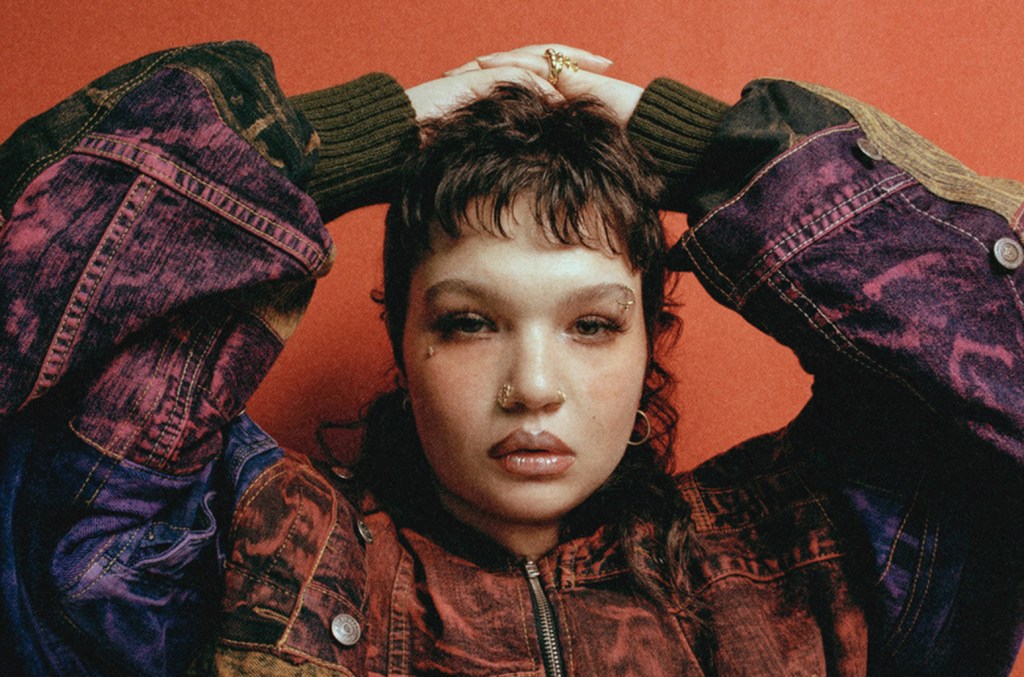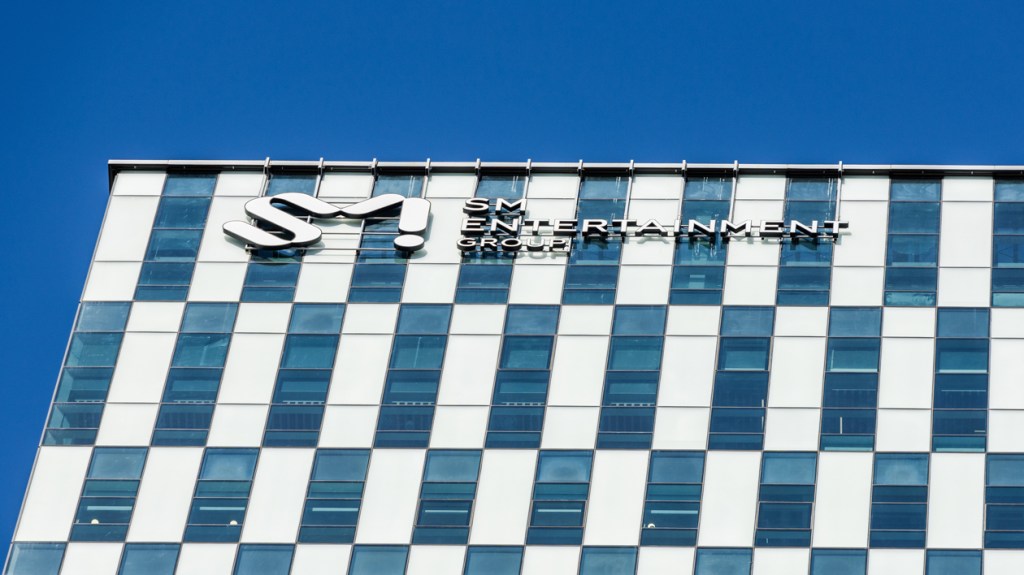International
Page: 5

Henry Cárdenas was on his way to Texas from Chicago when he got the news: Julión Álvarez’s work visa was cancelled, which meant the música mexicana hitmaker couldn’t enter the United States in time for his sold-out show at the AT&T Stadium in Arlington, Texas on May 24. “We had everything set up already,” says Cárdenas, founder/CEO of the powerhouse Cárdenas Marketing Network, still perplexed by the situation. “The entire production, including labor and equipment, amounted to over $2 million dollars — it was all a complete loss because we had to postpone the event. It was unbelievable.”
Álvarez — who in April made his grand return to the U.S. with a historic run at L.A.’s SoFi Stadium after being sidelined for eight years over since-cleared issues with the U.S. Treasury — was traveling from Guadalajara to Texas the day before the show and was informed at the airport that he couldn’t board the plane because his visa was cancelled. “I’ve been in the business for 45 years and I had never seen this,” Cárdenas adds. “In the past, we’ve known of groups or bands that apply [for a non-immigrant visa] and are denied but at least we were informed ahead of time. The day before your sold-out stadium show with 50,000 people? No way. We immediately started calling our lawyers but unfortunately, we haven’t gotten to the bottom of it. If you ask me right now what the reason for the cancelled visa is, I don’t know. Nobody knows.”
In the past two months alone, at least a handful of regional Mexican acts — including Los Alegres del Barranco, Banda Cuisillos, Lorenzo de Monteclaro and, most recently, Grupo Firme — have shared a similar experience to that of Álvarez’s. Their work visas — it’s unclear if they are O-1 or P-1B visas — are either delayed in an “administrative processing” or outright revoked by the U.S. State Department, leading to postponed shows or cancelled festivals and performances. Such was the case for touring giant Firme, which was unable to perform at La Onda Fest in Napa Valley, Calif., on June 1. Chicago’s Michelada Fest, featuring Mexican music headliners Luis R Conriquez, Firme and Gabito Ballesteros, cancelled its two-day summer event over artist visa “uncertainty.”
In general, U.S. visa uncertainties under the Trump administration have upended multiple communities and groups of people. “Everything is taking longer under Trump,” says attorney Daniel Hanlon, who specializes in immigration law. “It’s a combination of a few things, including stricter vetting policies, which have resulted in delays in visa processing almost across the board. We’re seeing this with foreign students at universities and now these musicians, and no one knows how it’s being brought to the attention of those who are in the position to make these revocation decisions, or why they are deciding to do this now. It could be completely politically motivated.”
In an unprecedented move, Deputy Secretary of State Christopher Landau announced on X that the State Department had revoked Los Alegres del Barranco’s work visas after the group portrayed images “glorifying” drug kingpin “El Mencho” at a concert in Mexico in March. “In the Trump Administration, we take seriously our responsibility over foreigners’ access to our country. The last thing we need is a welcome mat for people who extol criminals and terrorists,” his post reads.
Julión Álvarez performing during a concert at Arena Monterrey on October 29, 2021 in Monterrey, Mexico.
Medios y Media/Getty Images
In Mexico bans on narcorridos have spread across the country, where now 10 states have implemented laws to control or limit the diffusion of corridos in public spaces. But the U.S. had yet to really take a stance on the lyrics, which can be compared to gangster rap. That quickly changed this year when a wave of regional Mexican acts began to be impacted by visa delays, going beyond those who sing narcocorridos. Grupo Firme and Julión Álvarez — two of the biggest touring acts in the genre’s history, breaking barriers for regional Mexican artists in the U.S. — are mainly known for norteño and banda ballads and party songs, not narcocorridos particularly.
“We don’t know what we are fighting against because we really don’t know the reason these visas are getting denied or revoked, and it seems like it’s no longer just because they sing narcocorridos, which is what they initially had said,” says Mariana Escamilla, vp at Promotores Unidos USA, a longstanding organization composed of promoters who specifically work the regional Mexican touring circuit. “People don’t have the confidence to buy tickets in advance anymore if the artist is coming from Mexico. That’s a huge problem because we rely on pre-sale to determine if an event is going to sell or not. Now, I think fans will wait until day-of to buy the ticket when they see that the artist has finally landed in the U.S.”
Non-immigrant visas like O-1 and P-1B, the ones artists typically apply for “extraordinary achievement or ability,” are short-term work permits that need to be renewed by the artists and their petitioners and must include an agenda listing performances scheduled and where they’re performing every single time they apply. But even after being approved, these visas can be revoked at any time. Once the visa gets delayed by the State Department, for reasons like “administrative processing,” there’s no timeline for resolution. “It’s a euphemism for basically more background checks,” adds Hanlon. “It is unknown to the applicant what they are looking at, where they are looking or what they are looking for. They use that as a blanket to delay the processing of visas. So, the visa is refused until that’s resolved and then it could be issued or approved later but often it goes into a black hole and there’s nothing much you can do about it.”
In a statement sent to Billboard, a spokesperson for the U.S. Embassy & Consulates in Mexico said, “Due to privacy and other considerations, and visa confidentiality, we generally do not comment on U.S. government actions with respect to specific cases. Continuous vetting and visa revocation actions are not limited to visa holders from any specific country or area in the world. All visa applicants and visa holders, no matter the visa type and where they are located, are continuously vetted.”
What could be interpreted as targeting Mexican music and culture aligns with the Trump administration’s “disdain for Mexicans,” says entertainment attorney Marjorie García, partner at King, Holmes, Paterno & Soriano. “Any indication that [artists] are singing about anything the government doesn’t like, just like they [want to cancel] funding for PBS and NPR, if you’re not saying the things they want you to say, there is a perception that you don’t get to be here.”
Whether intentional or not, the timing couldn’t have been worse. In the past few years alone, regional Mexican has exponentially grown in popularity and global exposure. In 2023, Billboard reported that regional Mexican music consumption in the United States had jumped 42.1% year over year, outpacing gains in the Latin genre overall, as well as country, dance/electronic, rock and pop, according to Luminate.
“The regional Mexican music movement can’t keep growing if its artists can’t tour the U.S.,” García says. “All aspects of our business will be impacted. Before, you could predict the length of time that you needed for the visa process; you had a window. But now, the visa is being pulled after it’s already given, and as you get closer to the show, and at that point, you either show up or pay. There’s no way you can plan for someone to cancel your visa. This is all going to have a chilling effect when artists voices are most needed and in demand.”
Visa delays or revocations will almost certainly not fall under a contract’s force majeure clause, meaning event cancellation insurance very likely won’t cover it. “It’s up to individual artists to apply for those visas and get their documentation together. If the U.S. government says no, that’s almost assuredly not going to be covered by event cancellation insurance,” says attorney Tim Epstein, partner at Duggan Bertsch, who represents most of the independent events and festivals in North America, including Sueños and Baja Beach Fest. “Maybe once a year you were dealing with artists having to cancel concerts or festival performances over visa issues, but having a whole festival canceled because of artist visa issues … I have never seen that before.”
The financial impact this will have on artists who can’t tour the U.S. will be long-lasting. “A group like Los Alegres del Barranco that has a large following in the United States and already had contracts signed there, it is devastating financially,” Luis Alvarado, spokesperson for Los Alegres del Barranco, tells Billboard. “It is obvious that there is some kind of movement against Los Alegres del Barranco, but also against musicians who play this genre of music (regional Mexican). We’re waiting first to clear the judicial process in Mexico and then begin a conversation with the U.S. government.”
The U.S. is the No. 1 market to tour in — it’s the “base for success,” says Cárdenas. “You get guys like Firme and Julión who gross $10 million in one night here. This is where you make the big money — you don’t make the money in Mexico, with all due respect.”
For now, Cárdenas is staying optimistic and working diligently to help resolve this issue. “There are thousands of people working at the stadium when a concert happens, from parking, to vendors, production staff, all kinds of occupations that didn’t make any money because the Julión show didn’t happen,” he says. “That weekend, we lost more than $2 million that we won’t recover. How many of these instances can we survive? If this was a small promoter, it would go out of business immediately. You can’t lose $2 million every weekend.
“Someone has to go see the guys in Washington and tell them, ‘Listen, we have to fix this,’” Cárdenas continues. “This is not $100 or $200, this is millions of dollars; we have 50,000 people in one stadium. They consume everything — food, water, beer, and people are working, trying to make a dollar. Now, we’re talking to the political sector, calling our local congressmen and senators, and they are aware of the situation, and I’m sure they will fix it. Otherwise, this will jeopardize the entire industry.”
Additional reporting by Tere Aguilera and Natalia Cano.
Lola Young and Simply Red’s Mick Hucknall will collect prestigious awards from ASCAP at a ceremony in London next Tuesday (June 17).
The “Messy” hitmaker will be awarded the Vanguard Award which recognises an artist whose “innovative work is helping to shape the future of music,” and follows Young’s success at the Ivor Novello Awards in May in the Rising Star Category.
First released in May 2024, “Messy” enjoyed a month-long stay at No. 1 on the U.K.’s Official Singles Chart earlier this year, and peaked at No. 14 on the Billboard Hot 100. The song also topped the Pop Airplay and the Rock & Alternative Airplay charts. Later this month, Young will perform at Glastonbury Festival.
Simply Red’s Hucknall will also be celebrated at the ASCAP London Music Awards with the Golden Note Award which recognizes his songwriting catalog over the past 40 years as the lead singer and songwriter in Simply Red as well as in his solo career.
Trending on Billboard
The group released their debut LP, Picture Book, in 1985 and the band boasts five U.K. No. 1 LPs, and two of their songs – “Holding Back the Years” (1986) and “If You Don’t Know Me by Now” (1989) – hit No. 1 on the Billboard Hot 100. In 2025, Simply Red embarked on a 40th anniversary tour through the U.K., Europe and South America.
”Mick Hucknall has made an indelible mark on a generation with his impassioned vocals and classic songwriting,” said songwriting great and ASCAP chairman of the board and president Paul Williams. “His singular mix of soul, funk and pop sounds made him a master of blue-eyed soul. We are thrilled to present him with the ASCAP Golden Note Award.”
The Golden Note Award has not been handed out since 2016 when Duran Duran were chosen for the prize. Other previous recipients include George Michael, Elton John, Blondie, Usher, Lionel Richie, Jay-Z and Stevie Wonder.
ASCAP will celebrate both Young and Hucknall at a private event in London on June 17, with U.K. songwriters honored in categories such as song of the year, top streaming song, top hot dance/ electronic song and more.
Exceleration Music has announced an agreement to acquire Cooking Vinyl, a key independent music company in the U.K. market (Jun. 9).
The move is the latest by Exceleration, lead by former Concorde CEO Glen Barros alongside influential executives John Burk, Amy Dietz, Charles Caldas and Dave Hansen, to consolidate its standing in the independent music space, offering distribution, investment and label support services.
In 2023, Exceleration also acquired distribution company Redeye Worldwide, joining existing labels such as +1 Records, Alligator, Azadi, Bloodshot, Candid, Kill Rock Stars, Mom+Pop, Redeye Worldwide, SideOneDummy, The Ray Charles Foundation/Tangerine Records and Yep Roc Records in Exceleration’s portfolio.
Cooking Vinyl originated in 1993 with its signing of folk troubadour and activist Billy Bragg, and over its 32-year history, has worked with acts such as Shed Seven, Suzanne Vega, Passenger, The Prodigy, The Cranberries, The Darkness, Deacon Blue, 47 Soul, Roger Waters and The Jesus and Mary Chain.
Trending on Billboard
In 2024, Cooking Vinyl enjoyed a pair of No. 1 albums with two separate LPs by Shed Seven hitting the top spot on the U.K.’s Official Albums Chart: January’s A Matter of Time and September’s Liquid Gold. In February 2025, The Darkness hit No. 2 with Dreams on Toast.
A press release adds that Cooking Vinyl will operate independently and continue to be led by managing director Rob Collins, with founder Martin Goldschmidt remaining in his position as chairman. Cooking Vinyl Publishing UK, Cooking Vinyl Publishing Australia and Motus Music, the statement continues, are not included within the acquisition.
“At Cooking Vinyl, we’ve worked tirelessly to help our artists achieve both artistic and commercial success — without ever compromising their uniqueness or creative control. This deal enhances that mission,” says Collins in a statement.
“Our artists will still benefit from our close-knit, highly personalised team that combines deep industry expertise with old-fashioned hard graft. But now, with the expanded U.S. capabilities, enhanced resources, and the broader global reach of the Exceleration structure, we’re able to offer even stronger support to our current and future roster. I look forward to working with their team to spearhead this next phase for Cooking Vinyl!”
The Billboard Canada Screen Composers of the Year Award has its inaugural shortlist.
The award, presented by SOCAN, is shining a light on five talented composers who have made a global impact, scoring some of the most powerful moments in film and television.
Together, these musicians are responsible for the sounds behind some of the most talked about television and cinema of the past year, from The White Lotus to Palm Royale, massive IMAX documentaries to video games to major broadcasts of one of Canada’s national pastimes: hockey.
The winner will be announced at Billboard Canada Power Players on June 11, giving these pivotal artists – often positioned behind the scenes – a position onstage alongside the most powerful executives in Canadian music.
The shortlisters include:
Trending on Billboard
Cristobal Tapia de Veer – A three-time Emmy and BAFTA-winning composer who’s known for work on critically acclaimed series like HBO’s The White Lotus, C4’s Utopia, Black Mirror, and No. 1 box office surprise hit Smile.
Andrew Lockington – Hybrid composer for sci-fi film Atlas, Mayor Of Kingstown, Lioness and Landman. An avid Maple Leafs fan, he also composed the theme for Amazon Prime Monday Night Hockey NHL broadcast series.
Michelle Osis – Four-time Canadian Screen Award nominee Michelle Osis is best known for her score to the gigantic screen documentary TRex in IMAX, as well as for her collaborations with composer Mark Korven on Netflix’s Don’t Move and the MGM+ series Billy the Kid. With partner Terry Benn, she’s composed for Carved for Disney+ and the festival favourites film Dark Match and Sway.
Mark Korven – Award-winning composer Mark Korven is best known for his scores to the A24 features The Witch and The Lighthouse, and for the over 10 million YouTube views of him performing on his invention, the Apprehension Engine. The last two years have seen him working The Black Phone, The First Omen and Until Dawn for Sony Playstation.
Jeff Toyne – Toyne’s score to Apple TV+’s Palm Royale (Kristen Wiig, Laura Dern, Carol Burnett) combines jazz, Latin and orchestral elements to evoke the 1960s and has won multiple Emmys and Canadian Screen Music Awards, among others.
Read more about all the nominees here.
deadmau5 & REZZ, Khalid Star on the Cover of Billboard Canada
Billboard is bringing the Billboard Summit to Canada next Wednesday (June 11) at Toronto’s NXNE, and one of the standout panels is a conversation between deadmau5 and REZZ. This week, the pair appeared on the cover of Billboard Canada to unpack their creative process in a rare joint interview.
“We produce in two totally different ways,” says Joel Zimmerman, the man behind deadmau5. “I am so old school and she is so new school.”
Both artists hail from Niagara Falls, Ontario, and both are known for their innovative production, DIY ethos and big-stage spectacle. They’re both big thinkers and big presences, instantly recognizable for their larger-than-life visual trademarks – deadmau5 with his signature LED mau5head helmet and REZZ with her hypnotic spinning light glasses – and they both have dedicated cult fanbases.
REZZ – born Isabelle Rezazadeh – cites deadmau5 as an immeasurable influence.
“He essentially birthed me as a producer,” she says. “He birthed my entire interest in making music.”
In 2021, deadmau5 and REZZ officially joined forces with their first on-record collaboration, “Hypnocurrency.” It’s dark, spellbinding and meticulously layered – a slow-burning cinematic journey that lands squarely between their two sonic worlds. To create it, they both had to step outside their comfort zones.
When asked what he learned from working with REZZ, deadmau5 doesn’t miss a beat.
“I learned that there are BPMs that actually do exist below 128,” he deadpans. “I didn’t know that all you had to do was click on the number and drag it down.”
The two give unprecedented access into how they create, including a tease of another upcoming track as REZZMAU5.
Read the full story here and get your tickets to Billboard Summit here.
Khalid will headline Billboard Canada The Stage at NXNE the following day, on June 12. He also joined Billboard for a cover story for Billboard Canada and Billboard that dropped today.
The R&B and pop artist talks about his ‘flirty side,’ gay identity and the myth that he’s an introvert. “My new era of music feels like I’m finally ready to be the artist I’ve always dreamt of being,” he says. “It goes back to the regressions of when I was a child — imagining myself and thinking, ‘I want to be this artist one day.’ Now I feel like I have the confidence to finally be that artist.”
Read the full story here.
On a warm, breezy evening in Kyoto, Japan’s biggest music stars walked a red carpet, performed their most popular hits and thanked their fans as they took the stage to receive ruby-hued awards.The dazzling ceremony, which was televised across Japan May 21-22 and livestreamed on YouTube, felt in many ways similar to the Grammy Awards.
But remarkably, even though Japan is the world’s second-biggest music market, the inaugural Music Awards Japan (MAJ) marked the country’s first major national music awards show.
“We’re honored to have received an award, but I also believe this could become a goal for young people in Japan who are just starting out in music,” said Ayase, producer and member of Japanese duo YOASOBI, after winning the top global hit from Japan award. “I hope that through events like this, people both in Japan and abroad will come to appreciate the greatness of Japanese music even more.”
The glitzy new gala is core to Japan’s mission to turbocharge its export of music to the world. For years, its music industry was able to increase revenue by marketing to fans within its borders thanks to the country’s enormous appetite for physical products like CDs and vinyl, which still account for 62.5% of its overall recorded-music revenue, according to IFPI. But those days have come to an end: Japan’s population has been shrinking for the past 14 years — and has been slow to adopt streaming. The country’s recorded-music revenue fell 2.6% in 2024, even as global recorded-music revenue has grown for the last 10 years, according to IFPI. So, to woo a global audience, Japan’s major music trade groups representing labels, concert promoters, publishers, producers and other enterprises united to form the Japan Culture and Entertainment Industry Promotion Association (CEIPA) and organized the show, inviting guests from 15 countries to attend.
Nominees for most of the awards were selected based on chart data provided by Billboard Japan, and winners were determined by a two-stage voting process involving over 5,000 industry professionals.
Hip-hop sensation Creepy Nuts took home nine awards including song of the year for its viral hit “Bling-Bang-Bang-Born.” Singer-songwriter-pianist Fujii Kaze earned album of the year with his Love All Serve All project. Pop-rock band Mrs. GREEN APPLE racked up a multitude of honors including artist of the year. Kendrick Lamar, Billie Eilish and Ariana Grande won awards for the impact of their hits in Japan, though they weren’t present to accept in person. MAJ executive committee chairman Tatsuya Nomura says that CEIPA plans to host the next show in June 2026 at a bigger venue in Tokyo so fans and more international artists can attend.
One sign of this year’s success: Streams of songs that won top honors have jumped an average of 31% in Japan, with 21 out of the 27 songs that received top honors gaining streams compared with the previous week, according to Luminate.
This story appears in the June 7, 2025, issue of Billboard.
Goldman Sachs lowered its global growth expectations for the music industry for the next five years, as well as its forecast for global recorded music revenues this year, in a report published Tuesday (June 3).
The Wall Street investment bank’s Music in the Air report, which has become a closely-watched guide for music industry executives and investors, said it expects the global music industry to generate $31.4 billion in net revenues in 2025, a $2.5 billion decline from its 2024 projection of $33.9 billion.
That reflects growth of 6.8% on average from 2025 to 2030, down from the 7.6% compound annual growth rate (CAGR) analysts had previously forecast for that period last year. The primary factors driving that downward revision, Goldman says, are the slowing growth of last year’s recorded music revenues and lower ad-funded streaming growth, both of which contributed to expectations of 7.9% streaming growth on average from 2024-2030, down from the 9.8% previously forecast.
Trending on Billboard
“2024 was the first year since we began forecasting music industry trends where global music revenues fell short of our expectations,” the authors of the closely watched report wrote. “This was also the first year since we started forecasting music industry revenue where the recorded music market came well below our expectations.”
Goldman also issued new estimates for future growth, projecting that the music industry will grow at a compound annual growth rate of 4.8% for the years 2031 to 2035.
These slower growth forecasts echo findings of earlier reports this year, such as the IFPI’s March findings that global recorded music growth for 2024 was half of what it was in 2023, and the RIAA’s similar report that found that U.S. streaming revenue growth last year slowed to 3% from 7.7% in 2023.
Nonetheless, Goldman analysts said they expect the value of music rights and companies to remain “resilient” amid an uncertain macroeconomic backdrop, and that more frequent streaming subscription price increases and individualized service plans will provide support.
In 2025, Goldman says it expects global music industry revenue growth of 7.7%, down from its previous forecast of 8.3%, with growth in the live music sector and a slight improvement in recorded music revenue growth serving as the main drivers.
Goldman’s revision of its streaming growth outlook within recorded music revenues was due to significantly lower ad-funded streaming, researchers said. Ad-funded streaming growth is expected to slow to 5.7%, compared to its 2024 forecast of 11.3%.
Researchers said these “meaningful changes to our streaming assumptions” stem from a structural shift of more consumers preferring shortform as opposed to longform videos, less upside gained from emerging platforms and the impact of near-term uncertainty.
Those factors also caused Goldman to expect slightly lower subscriber and average revenue per user growth among streaming platforms.
In a studio hangar just outside Cairo, weeks before the release of his new album The Man Who Lost His Heart, Marwan Moussa sits with a resolve that only grief teaches. The kind shaped by someone who’s been to the depths of loss and carried back not just a song, but 23. The album wasn’t built overnight, Marwan Moussa explains to Billboard Arabia in his exclusive May cover interview. It was carved out of grief and shaped with intention. Each track, he says, was sculpted from the turbulent, shifting emotions he experienced during the long and winding journey of healing after the heartbreak of losing his mother two years ago.
Explore
Explore
See latest videos, charts and news
See latest videos, charts and news
The album, he says, was “a kind of therapy.” Like writing a journal, sleeping on it, then reading it with fresh eyes to look at his life from a different perspective.
Trending on Billboard
The Man Who Lost His Heart doesn’t open with a bang; it opens like a dream taking shape. “Try to remember” is the first line we hear, fighting its way through an ethereal sound design. Structured in five parts, the album mirrors the five stages of grief – denial, anger, bargaining, depression and acceptance – but more than that, it charts the long, slow work of survival. Moussa doesn’t just document his pain; he invites you into it, offering a guide and companionship with each track.
“It isn’t a linear journey, of course,” he explains. “You could be angry, then suddenly find yourself depressed, and then all the way back in the denial stage.”
But the album isn’t merely a chronicle of grief. It’s a sonic deconstruction of Moussa’s process. Blending trap-shaabi (a genre he helped popularize that combines trap beats with various textures found within Egypt’s popular folk music), heavy synths, tender melodies and deeply personal sound bites – including audio lifted from childhood VHS tapes of him and his family – he crafts a layered, emotional landscape.
The Man Who Lost His Heart isn’t just a collection of songs. It’s a reckoning.
Take his track “BOSAKBER,” which spirals through memory and misfire. His flow isn’t clean; it’s distorted and fractured like a freshly broken heart. In the accompanying video, directed by Youssef Haridy, Moussa appears alone beneath a wide, empty sky. He fights his own reflection. The imagery is both surreal and stark, but not hopeless. It’s not the portrait of someone broken – it’s the portrait of an artist in the whirlwind of putting themselves back together, even if the pieces no longer fit the way they once did.
“We wanted to create a surreal imagery that feels deeply rooted in oriental aesthetics; something distinct,” Moussa says.
Moussa is not new to transformation. Over the last several years, he’s become one of the most influential voices in Arabic hip-hop – not only as a rapper, but as the producer behind dozens of hits, including “Brazil,” and more recently “Kebda” for longtime collaborator Afroto. He’s also been a constant on Billboard Arabia’s Artist 100 chart for over 55 consecutive weeks.
Moussa first set foot on Egypt’s hip-hop scene in 2016, releasing his early tracks on SoundCloud. The following year, his collaborations with Abyusif on “La2 Mafeesh” (No, There Isn’t) and “Zaghzaghto” (Tickling) brought him into the spotlight, and his skills as both rapper and producer began to further solidify.
In 2018, he released his first music video for “Kiki,” which marked his production breakthrough. Then came “Fr3on” (Pharaoh) in 2019, with its unpredictable rhymes and sharp wordplay over a solid beat and advanced production techniques.
Marwan Moussa
Amina Zaher/Billboard Arabia
Marwan Moussa
Amina Zaher/Billboard Arabia
After experimenting with several genres, Moussa’s 2019 track “El Bosla Da3et” (The Compass Is Lost) marked a turning point not only for his career, but for Egyptian trap as a whole. It was one of the first tracks to experiment with fusing shaabi and trap, paving the way for the rise of trap-shaabi, as it became known subsequently.
His 2021 album Florida cemented his reputation as an innovator, blending regional rhythms with experimental production in a way few dared to. From songs like “Tesla” and “Sheraton” to shaping his own catalog to producing for Egypt and North Africa’s most respected MCs, Moussa has always known how to bend sound to feeling.
But The Man Who Lost His Heart, released in full on May 5, is different. If Florida was Moussa pushing his craft’s limits, this album is what remains when all else falls away – just music, message and the strength found in the breaking.
That strength is amplified by a slate of carefully chosen collaborators. The album features standout moments with producer El Waili on “Yamma” and Afroto, as well as verses from Lege-Cy on “Klameny Belel.” But it’s Donia Wael’s contribution that Moussa calls essential to the record’s emotional core. “I want Donia Wael’s voice on the album to be interpreted by each listener in his or her own way—as a girlfriend, friend or therapist,” he says.
“The reason the album came out this way,” says Moussa, “is that I thought if I give through the five stages of grief, maybe it helps you get through what you’re dealing with or get past a tough time in your life or your current period of depression.”
In that way, The Man Who Lost His Heart is more than an act of expression. It’s an offering. A hand on your shoulder there to remind you that no stage of sadness lasts forever, even when it feels like it might.
For Moussa, producing an album this emotional, meant risking everything: the cool detachment of a hardened rapper. What he’s delivered instead is something harder, and far more lasting. A document of heartbreak. And perhaps, in doing so, he has found his heart again, and his voice.
Marwan Moussa
Amina Zaher/Billboard Arabia
GYRO Group has appointed music executive Matthew Rogers as its new chief commercial officer (CCO), marking a major leadership move for the Australian-owned digital music distribution and artist services company.
Rogers, who spent 14 years as chief operating officer at UNIFIED Music Group, brings a wealth of experience in scaling independent music businesses globally. In his new role, he will be instrumental in driving the growth of DistroDirect, GYRO Group’s hyper-local boutique distribution and catalogue management system, which now powers over 500 micro-distributors across 40 markets on six continents.
“We are incredibly excited to welcome Mat to the GYRO Group family,” said CEO Andy Irvine.
Trending on Billboard
“His extensive experience in driving growth and his deep understanding of the independent music landscape will be invaluable as we embark on the next phase of development for DistroDirect and the wider group. Mat’s strategic insights, global networks and commercial acumen will be crucial in achieving our ambitious goals.”
The appointment follows a significant track record: During his time at UNIFIED, Rogers oversaw the company’s transformation from a seven-person Australian operation into a 100-person international enterprise with offices across Australia, North America and Europe. He played a key role in building the heavy music label UNFD and developing STL Tones into a major player in music software and plugins.
Rogers was also pivotal in UNIFIED’s early response to the landmark Raising Their Voices report in 2022, helping to implement progressive strategies around mental wellbeing, workplace safety and industry culture.
He has served over seven years on the board of the Australian Independent Record Labels Association (AIR), as well as four years on the board of the Worldwide Independent Network (WIN), including two years as vice president.
“The move marks a homecoming for Rogers, who returns to a Brisbane-based company nearly 20 years after relocating interstate,” said CMO and co-founder Vivienne Mellish. “GYRO Group is proudly headquartered in Queensland, creating global opportunities for independent artists so we’re absolutely pumped to welcome Mat back to where it all started for him. His track record speaks for itself, and we are confident that his leadership will further strengthen our commercial strategies and market presence. We are thrilled to have his expertise on board.”
“I am thrilled to be joining the dynamic team at GYRO Group at such a pivotal time,” added Rogers. “Having witnessed the company’s impressive growth and commitment to the independent music community, I am eager to contribute my experience to further develop DistroDirect and support GYRO Group’s ambitious international expansion plans. Joining a Queensland-based company after many years interstate feels like a natural and exciting next step.”
With offices across Australia, the U.S., the U.K., Canada, Brazil, the Philippines and India, GYRO Group now represents several brands including GYROstream, DistroDirect, GROUP SPEED and Soothe Sounds. Independent artists using GYRO services have secured ARIA wins, Grammy nominations, No. 1 records and global chart placements. Notable names on their roster include Dom Dolla, ONEFOUR, WILLOW, The Amity Affliction, Lithe, Emma Memma and more.
Global success enjoyed by the likes of Central Cee, Charli xcx and Dua Lipa helped lift British music exports to a record high of £794 million ($1.72 billion) in 2024, according to new figures from the British Phonographic Industry (BPI).
The London-based trade body says last year’s total is the highest since it began analyzing labels’ overseas income in 2000, and that it’s more than triple the £243 million ($328 million) from 2013. The result also means that the U.K. remains the world’s second biggest exporter of music, making up around 8% to 9% of global streams, says the BPI.
Driving last year’s stats was a combination of established, globally successful British artists and a new generation of homegrown talent making waves on the world stage. In total, around 600 artists accumulated more than 100 million global streams throughout 2024, including high-charting releases from Central Cee, Charli xcx and Dua Lipa, alongside platinum singles for Myles Smith (“Stargazing”) and Good Neighbours (“Home”).
Trending on Billboard
Data by Luminate shows that the list of top revenue-generating artists also includes contemporary himakers Adele, Arctic Monkeys, Ed Sheeran, Harry Styles and Sam Smith, as well as icons who first rose to prominence in the 1970s, such as Queen and Elton John.
Consumption of British music increased in all but one of the main global regions in 2024, says BPI. This trend was led by an incrase of 29% in the Middle East and 12% in Africa. North America and Europe remained the biggest regions for export.
The BPI attributes many of these major gains to British record labels’ long-term investment in new talent and established acts. The organization reports that between 2020-2024, label businesses invested more than £2 billion ($2.7 billion) in artist A&R and marketing.
The rate of growth is declining, however. The BPI reports that income from the sales and streams of British music overseas increased by just 1.9% in 2024, compared to 7.6% in 2023 and 20% in 2022. In previous years, the consumption of British music globally was bolstered by extensive album and touring campaigns from superstars including Styles and Lewis Capaldi. Last year, however, no British artists ranked among the 20 most-streamed artists globally, according to the IFPI.
BPI chief executive Dr Jo Twist said in a statement: “It’s brilliant to see British artists, backed by their labels, continue to shine on the world stage, including a new generation of talent such as Charli XCX, Lola Young, and Myles Smith, among others. Their emergence shows we are on the cusp of future success.”
In her statement, Twist also stressed the importance of raising awareness around the government’s potential future approach to generative artificial intelligence training, as well as highlighting the need for further conversation around music education in the U.K.
Twist continued: “If we are to realise this potential in an increasingly competitive global market and keep British music a headline act, we need the right environment where the industry comes together to deliver growth to the UK. We have a Government that values not just the cultural power of British music but also the foundations of its success: creative arts education, labels that are supported and encouraged to invest in talent, successful programmes like the Music Export Growth Scheme, and a gold standard copyright framework that safeguards creativity and rewards human artistry.”
HYBE has disclosed the sale of its remaining 9.38% stake in rival SM Entertainment to Tencent Music Entertainment (TME), a subsidiary of Chinese tech giant Tencent. The deal, valued at approximately 243.35 billion South Korean won (approximately $177 million), involves the transfer of 2.21 million shares at 110,000 won per share and is set to close on May 30, according to a new regulatory filing.
This transaction marks HYBE’s complete exit from SM Entertainment, a powerhouse K-pop agency behind acts like EXO, aespa and NCT 127.
Trending on Billboard
HYBE initially entered SME in 2023, acquiring a 14.8% stake from founder Lee Soo Man and later raising its holding to 15.78% through a failed takeover bid, ultimately losing out to Kakao, which now holds a 40.28% stake. After reducing its stake to 9.38% in May 2024, HYBE has now sold its remaining shares.
Why get out of the SME business? HYBE said on Tuesday that it has “divested noncore assets as part of a choice and concentration strategy” and that “secured funds will be used to secure future growth engines.”
TME’s acquisition makes it the second-largest shareholder in SME, behind Kakao. It operates leading Chinese music platforms such as QQ Music and Kugou Music and has existing ties to K-pop through partnerships with HYBE and others. TME also holds minority stakes in YG Entertainment and Kakao Entertainment, signaling its broader strategy to expand influence in the global K-pop landscape.
For SME, the deal could strengthen its reach in the Chinese market and enhance its digital distribution, artist promotion and content collaborations through Tencent’s various platforms. SME is coming off a strong Q1, with revenue up 5.2% year-over-year, driven by strong growth in concerts and recorded music. Concert revenue surged 58% thanks to tours by NCT 127, aespa and others, and recorded music rose 23.1%, led by Hearts2Hearts’ debut.
The acquisition reflects TME’s ongoing investment in Korean assets and sets the stage for deeper cross-border collaboration in music and media. It also marks the latest shift in the balance of power within the K-pop industry, highlighting the growing influence of Chinese tech giants in South Korea’s entertainment sector.
Meanwhile, HYBE is repositioning itself for future expansion, using the proceeds from this sale to invest in new ventures. The company continues to grow globally with its roster of artists including BTS, NewJeans and SEVENTEEN, and remains focused on developing next-gen platforms and talent. In the first quarter, HYBE reported strong financial performance despite a 5.9% drop in recorded music revenue. Total revenue rose 38.7% year-over-year, driven by a 252% surge in concert revenue and a 75.2% increase in merch and licensing. HYBE also expanded into Latin America with festivals and a music competition show.

 State Champ Radio
State Champ Radio 









